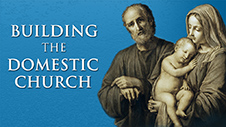Matthew, Mark and Luke all mention that at the death of Jesus, the veil (or curtain) of the Temple was torn in two, leaving the Holy of Holies open and exposed. The Holy of Holies and the Temple were where Israel knew it could always find its God. The opening of the Holy of Holies by the tearing of the curtain and, a few years later, the destruction of the Temple itself by the Roman army was traumatic. With no more Temple and no more Holy of Holies, where could the people go to find God now?
As the people and the rabbis confronted this question, many came to the conclusion that the Law and their traditions were where they could go to meet God. The Jewish followers of Jesus, though, came to a different, more radical, conclusion. They came to see, through their belief in Jesus’ teachings, death, and Resurrection, that Jesus himself was the new Temple and they would encounter God there.
And this new Temple, this new Holy of Holies, wasn’t separated from people or from the world. Now God could be found anywhere and everywhere, and no curtain separated God and people any more. Fifteen hundred years later, St. Ignatius of Loyola urged people to seek to find God in all things, insisting that all things were places to meet God, even those things, people, and events that seem to be empty of God, including the events of Jesus’ own passion and death. Nothing can keep God from meeting us and us from meeting God.
This Easter season is a perfect time for us to deepen our appreciation of the fact that Christ is God’s Temple and that there are no more curtains now between God and us, God and the world, God and life. Fifty days spent pondering this, as we move towards Pentecost, can make a tremendous difference in where we look for God and how we look at everything around us.
For more spiritual commentary by Fr. Frank Majka, SJ, please visit his website at http://www.frankmajka.com/








